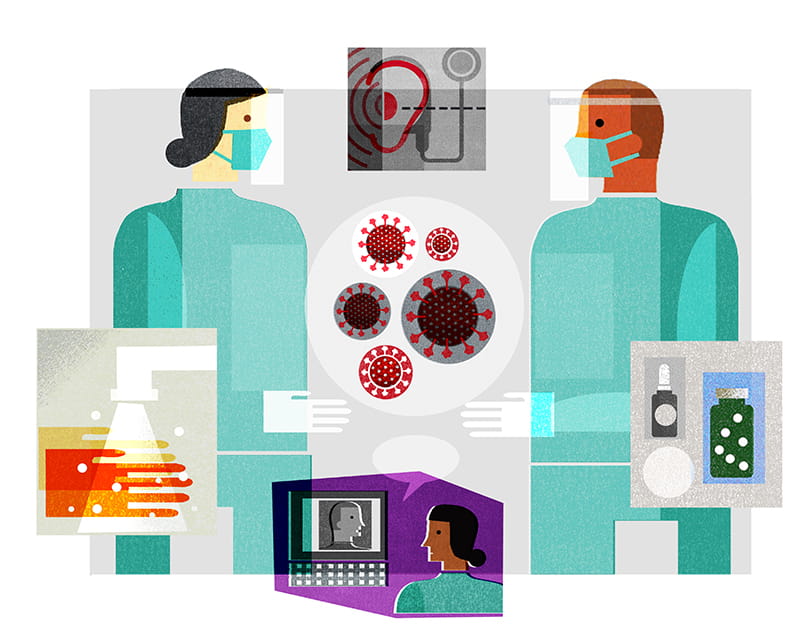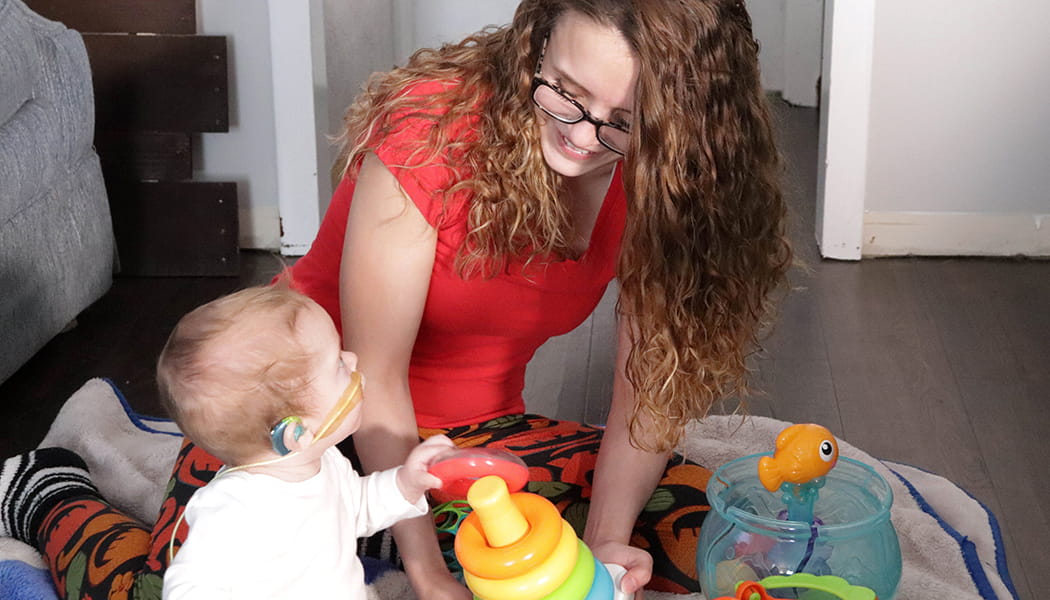New data published by researchers from The Ohio State University and partner institutions show hearing loss may influence infants’ visual processing abilities and subsequent cognitive development, including IQ.
Their findings bolster previous research confirming that congenital hearing loss affects many non-auditory skills, including working memory and sequence processing. Collectively, such results suggest that early interventions should address the whole child, and not just the ear.
A simple measure with significant meaning
Habituation, or the idea that an organism’s response to a stimulus decreases over time, is a basic but fundamental process shared by all living creatures. When human babies interact with their environments, they stare at new visual stimuli until the objects are fully encoded in their cognitive systems – in other words, until the objects become familiar. That’s when babies lose interest in these objects and look away.
“Visual habituation has been used for decades to measure how quickly and how well infants process visual information,” says Derek Houston, PhD, director of research at Ohio State’s Buckeye Center for Hearing and Development and the study’s senior investigator. “The premise is that infants who process information more quickly habituate more quickly. And there are correlations between habituation rate during infancy and abilities like nonverbal IQ later in childhood.”
Key conclusions
Aided by funding from the National Institute on Deafness and Other Communication Disorders, Dr. Houston and his team investigated whether deaf and hearing infants show different rates of visual habitation. They tested 23 deaf infants between 7 and 22 months of age who were candidates for cochlear implants, along with 23 age-matched, normal-hearing infants.
The infants were shown a novel, colorful object several times during a testing session. The team recorded how long the infants looked at the object during each presentation, to track their “look-away rate” and measure how long it took to habituate.
“Our deaf infants took significantly longer to habituate to visual stimuli and showed a slower rate of habituation,” Dr. Houston says. “Because our experiment didn’t involve sound or require hearing, it suggests that lack of hearing affects certain aspects of cognitive function very early in life.”
Dr. Houston says it’s too early to apply their results to clinical practice, but they’ve moved a step forward in understanding deaf infants’ holistic development.
“It’s speculative, but perhaps visual information is more important for deaf infants than hearing infants,” he adds. “They may adapt to their hearing loss by processing stimuli more deeply or in more detail, which comes across as ‘slower’ habituation. Our next phase of research will likely test this hypothesis.”
Integrating research and clinical care
The team’s habituation study is one of several research efforts supported by the
Buckeye Center for Hearing and Development. Launched in 2016, the center is comprised of clinicians and scientists from Ohio State and Nationwide Children’s Hospital. Together, they aim to set new standards for melding research and clinical care, to better address hearing impairment among people of all ages.
Other scientific projects underway include:
- Developing electrophysiologic technology that evaluates inner ear function and minimizes intracochlear damage, in real time, during pediatric and adult cochlear implant surgeries
- Understanding why some adults understand speech better than others following cochlear implantation, to better predict which patients may be at risk for poor outcomes
- Developing objective clinical tools for optimizing cochlear implant settings among children with cochlear nerve deficiency
Not only does the hearing center foster collaboration between researchers and clinicians, but it’s also poised to engage professionals from surrounding communities.
“We’re developing a statewide network of stakeholders who provide interventions to deaf or hard-of-hearing children from birth to age 3,” Dr. Houston says. “This collaborative may provide unique opportunities to engage stakeholders in our research efforts. They’ll be involved from the very beginning in raising the issues we should address or identifying the questions we must answer, so our research continues to be guided by people who work on the front lines.”
Read more featured stories

